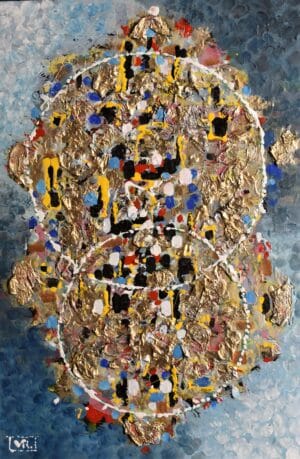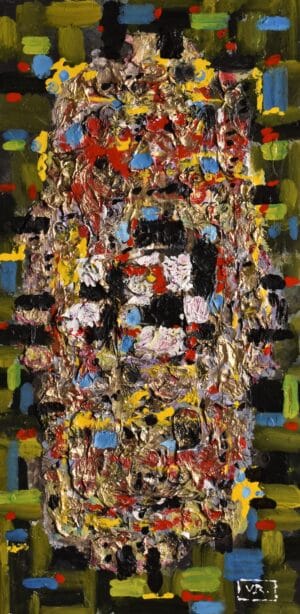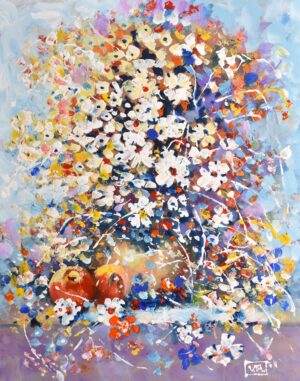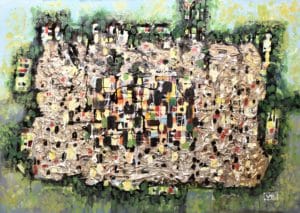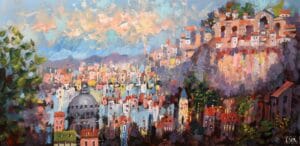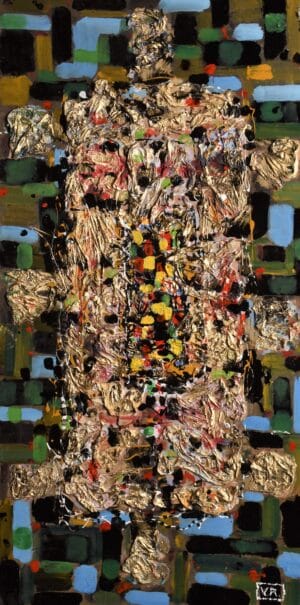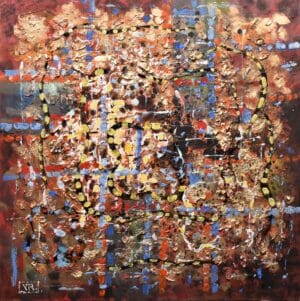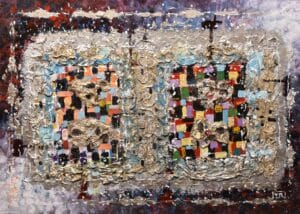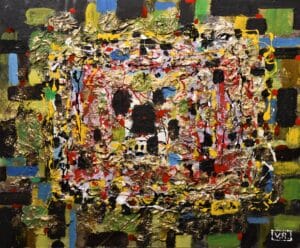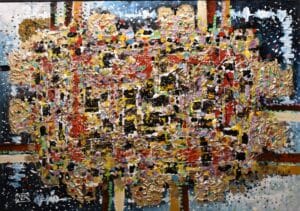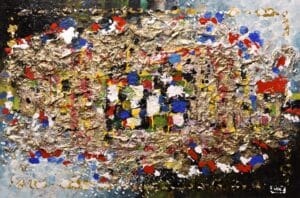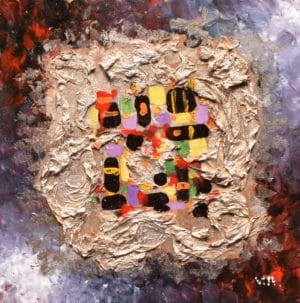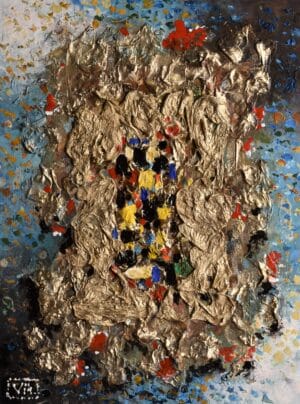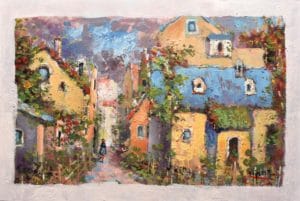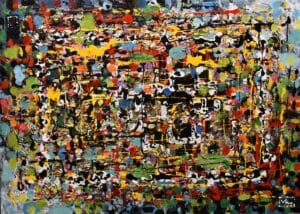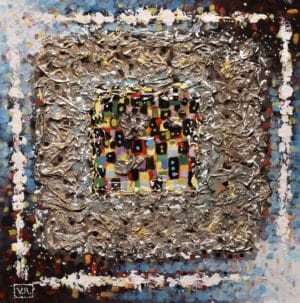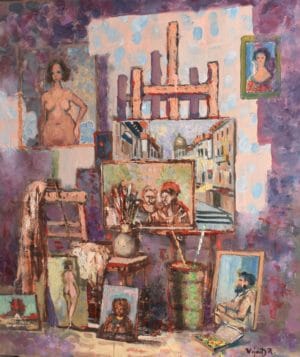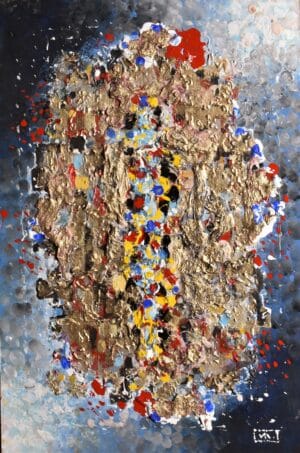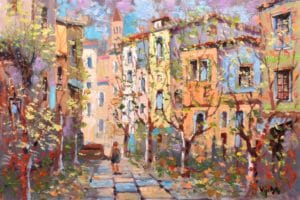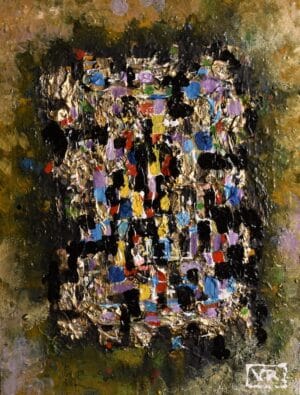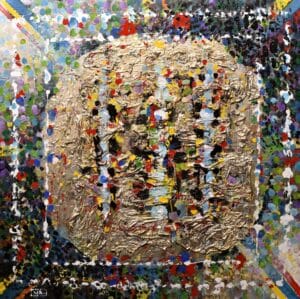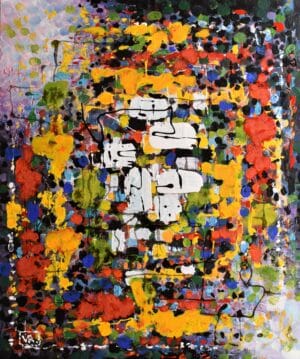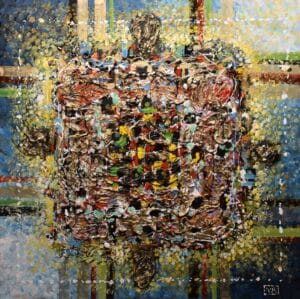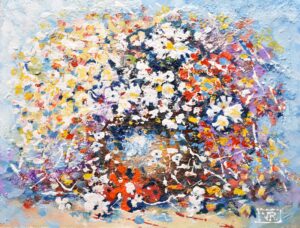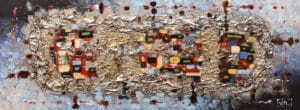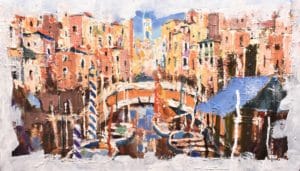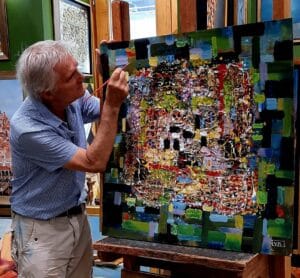 .
.
Reflections on writing a biography
Our hero thinks forlornly in his comfortable armchair, watching the light glinting off the metal reinforcements of the brushes, the gold of the dried resin and the other tools of his trade. His gaze avoids the ill-starred landscape. He resolves not to look at it for weeks. He thinks he should turn it towards the wall. But he does not move, paralyzed by failure.
Painters rarely talk about such moods. You know that in a few months you'll want to do the same thing again. You might find something that gives you an idea for a sequel. It will soothe you a little.
Most of them are not on a straight upward trajectory, broken by moods and salmander excitements.
A Dési a nice memory. Ervin Tamás, Gábor Papp were his masters. Charcoal and pencil drawing studios for four years. He was a studio photographer because he had to make a living. Then Artex (a company exporting artworks to the West).
He looked longingly at the pop art works of Robert Rauschenberg. The side streets around the College of Fine Arts (now the university) were lined with turn-of-the-century, neglected houses. He savoured the rich greys and brick reds of the crumbling plaster. A good-eyed art student framed in white chalk a few damaged details, giving the illusion of a complete, finished picture. Our man felt the idea had been stolen from him.
He tried new materials, new technologies at his fingertips: silver dust sprinkled on, linseed oil drizzled on. Interesting silver, yellowish spots. Came the coarser paper, sand mortar. Fine, but where are the colours? Disappointment, disappointment. An interrupted sentence can sometimes be very talkative. A canvas left white in places creates an expectant tension.
Two years from now. The two-year anniversary finds our painter in a similar mood to the one he was in when he painted that particular landscape. This time, a portrait of a woman on a canvas against a wall catches his eye. She undertook to paint it at the sometimes pleading, sometimes sulking encouragement of the model. From memory, he scans the woman's face for the traits that, if evoked, would elevate the experience to a painterly thrill.
A tired-faced woman with two ugly children. This is Holbein.
Eva has no children, but her face is really tired. May the end result be what she and the painter would like to see! A little life in the eyes, bangs, parted, moist lips, a little cocktail charm. Let's not get too Renoir! There's no virtuosity here, no virtuosity at all, Maybe a decent craftsman's work. This is a friendly studio. Eva will be pleased. She'll have the portrait, and the half-conscience picter the peace of mind.
Saint Luke help us, painters, not less the leaders of the guild!


